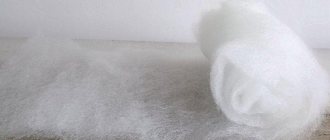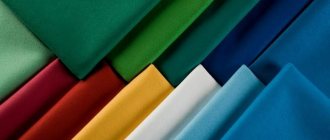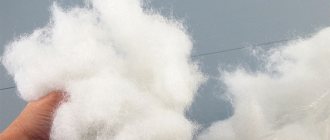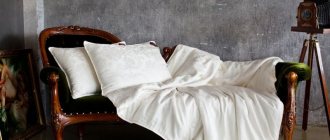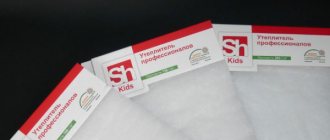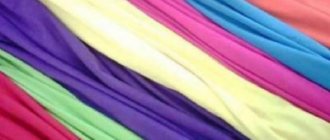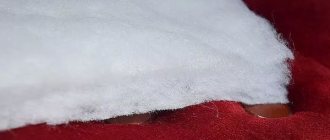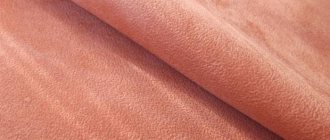What kind of material
Sherstipon is a Russian-made insulation material. It is an improved type of padding polyester. The filler can also be found on sale under the names: shersikon, shervisin, shersikron.
The new generation of insulation is warmer than its predecessor, padding polyester. It is superior in heat-preserving functions to holofire. While woolpon is not inferior to Thinsulate in its warming qualities, it is inferior in water-repellent properties.
The material compares favorably with elasticity and plasticity from batting. It is also more durable and not subject to deformation.
On average, a product with wool-pon filler lasts at least 6–7 years. With Thinsulate – up to 10 years, and with classic synthetic padding – about 3 years.
Hemp
This insulation is similar in its properties to linen thermal insulation. It does not emit toxins and perfectly retains heat inside rooms. Hemp is distinguished by the presence of antiseptic properties. This allows you to create a favorable microclimate in the house. Insulation made from hemp raw materials is not susceptible to the formation of fungus and insect reproduction.
The disadvantage of hemp-based insulation is the lack of domestically produced materials on sale. It is illegal to grow hemp for production. Therefore, you can buy roll insulation of different thicknesses, made in Germany. Their price is quite high.
Mice can live inside the insulation layer, so you need to use special pest control products. For many owners of private houses, this feature of insulation based on plant raw materials seems to be a minor drawback.
Here's what user Nir writes on the forum:
Nir
...it’s better to live in a straw house with clay plaster, having a cat, than in sip panels, but without mice that have escaped from 100% chemicals...
There are many ways to protect insulation from rodent attacks. Therefore, plant-based thermal insulation is actively used in the construction and renovation of houses. Our video shows the experience of building an eco-friendly house using straw as thermal insulation.
Composition and properties
The composition of woolpon includes natural sheep or camel, less often goat wool and hollow polyester fibers. The percentage varies depending on the manufacturer's specifications. The regulated amount of wool is at least 50%. Most often this figure is in the range of 60 – 70%.
The material is produced using one of two technologies: needle-punched or thermal bonding. Depending on the purpose, the insulation can be of different densities (100 g/m2, 150 g/m2, 200 g/m2, 300 g/m2, 600 g/m2).
So I use 200 g/m2 woolpon for sewing outerwear, and for blankets – 100 – 150 g/m2. To insulate jackets and coats, woolpontons with lining are produced, and quilted ones are more often used for the production of bedspreads and blankets.
Casual outerwear with wool wool is designed for frost down to minus 30°C. Manufacturers of sports equipment and outdoor clothing use denser wool wool (from 300 to 600 g/m2). The equipment is capable of heating at air temperatures down to minus 40°C.
Provided that the wool has gone through all stages of cleaning and processing, the color of the woolpona is white or beige.
Woolstipon or padding polyester
Both materials are lightweight, with good air permeability, have a similar structure, composition and scope of application. But there are still differences.
Widespread and versatile, synthetic winterizer is a non-woven fabric made of polyester fibers, which are held together by an adhesive component or temperature exposure. The volumetric structure, saturated with air, retains heat and is elastic. The advantages of synthetic winterizer are availability and low price.
However, it has low heat-saving properties, designed for the off-season and slight cold snaps, so it is not used for winter clothing, but wool wool is intended for frosty days.
Sintepon recovers less well when compressed and does not hold its shape well. After a short period of use, there is a displacement of the fibers, lumps appear and it gets knocked down. Moisture reduces the volume by almost half the thickness.
Synthetic winterizer contains an adhesive composition and is not suitable for people suffering from allergies or asthma, while woolen polyester is environmentally friendly. It is considered to be of higher quality and more durable, which is why it costs more.
Application area
Sherstipon is used in the production of outerwear (coats, down jackets, fur coats). It is also used to make home textiles and sports equipment.
The material is used to insulate women's, men's, and children's clothing. It is used as a quilted lining for winter coats or jackets.
The filler has proven itself well in suits for active winter recreation. They also fill sleeping bags with it.
Insulation for clothing is used for the production of hats. Most often these are hats for children.
Woolstipone is used as a filler for mattresses. But blankets with this filling have become more widespread. It is also used for stuffing pillows or sewing voluminous, quilted bedspreads. Thanks to the ecological purity of raw materials, children's blankets are produced from woolpon.
Artificial insulation
Holofiber is practically not inferior in thermal insulation to natural down. This is a lightweight and durable material that tolerates washing well and is intended for use at temperatures down to -30C (depending on density). However, holofiber is quite voluminous and has little plasticity, which is why it is used in the sports and tourism industries. Sold as a canvas and as a filler (in the form of balls, springs, etc.)
Thinsulate is one of the most popular modern insulation materials . This is the lightest material that “breathes” perfectly thanks to a fiber with a diameter 10 times smaller than the diameter of a human hair and does not absorb moisture. Thinsulate is one and a half times warmer than down, washes well and does not clump, and has a long service life. Available in several versions: thin, more voluminous, for shoes, with fire-resistant properties, etc. The only disadvantage of this material is the high price.
Slimtex is a non-woven fabric made of polyester and polypropylene fibers. Thin insulation for fashionable winter clothing. It does not absorb moisture and can also withstand steam treatment up to 110C! An excellent choice for any clothing!
Isosoft is an insulation material that is suitable for both sports and work clothing, as well as for use in extreme conditions. This thin material is lightweight, has good elasticity and softness. Thanks to the double-sided coating, the isosoft fibers do not move. For thermal insulation, it replaces 3-4 layers of padding polyester.
Fibertek is an insulation material produced in the Republic of Belarus. It consists of slippery siliconized fibers, thanks to which it retains its shape well even when wet. For strength and to prevent the movement of fibers outward, fibertek is reinforced with polypropylene fiber and quilted. An additional quilting pole - fibertek - is sewn to the product only along the main seams: side, shoulder, etc. Has excellent value for money.
Sintepon is an old-timer on the market of inexpensive insulation, the most common material that is produced by adhesive, thermal or needle-punched methods. Quite voluminous at the beginning, after wear and cleaning it loses in volume, as well as in thermal insulation. Suitable for temperatures down to -10C and used in children's clothing and inexpensive outerwear.
Polar fleece (polartek) is a special type of fleece with increased wear resistance. This is a lightweight material that tolerates washing well and dries quickly. Available in several types, which (depending on the thickness) can be used as an insulating lining or for sewing the main product.
To help you work with insulation, we offer some useful tips.
Adviсe
- You can combine several types of insulation in one product. For example, use Polarfleece as a lining, which will also serve as additional insulation. Or put one layer of insulation in the sleeves of the product, and two layers in the shelves and back.
- Modern insulation materials lose thermal insulation with each new machine stitch. Try to choose a model with a minimum number of seams on the insulation.
- Dry insulated clothing unfolded and away from heating appliances.
- Plan the seams on the insulation with an offset relative to the seams on the main and lining fabrics.
- For maximum thermal insulation, your model should include a neck, cuffs and hem that fit tightly to the body.
- The insulation will not protect against the wind! Use a windproof membrane between the insulation and the outer fabric.
Care
Items made with wool wool are easy to care for. Products with this filling can be washed. It is important to follow simple rules:
- the water temperature should not exceed 35°C;
- detergents are chosen without aggressive components. Bleaching agents are prohibited;
- when washing in a machine, choose a delicate cycle, with spin at low speeds or without it at all;
- When washing by hand, the products are not soaked, and when wrung out, do not twist them too much;
- dry outerwear by hanging them on hangers. Home textiles are placed on a horizontal surface in a straightened form;
- Ironing and drying near heat sources are not recommended.
Due to the wool content in the insulation, it is recommended to treat the product with anti-moth agents before storing.
Dear readers of the Tkan.Club website, if you still have questions on this topic, we will be happy to answer them. Leave your reviews, comments, share stories if you have dealt with this material! Your life experience may be useful to other readers.
Natural insulation materials
Sheepskin is a warm, hypoallergenic and durable material made from sheep's wool. Can be used at temperatures down to -25C. It is a heavy material, so it is mainly used to insulate children's winter clothing intended for children under 1 year of age. Can be washed by hand at water temperatures up to 30C, but it is best to use dry cleaning services.
Wool (Zelwolwaterline) - resembles a plastic knitted fabric of small thickness. Composition: 60% wool, 40% viscose. Due to its softness and lightness, it adapts well to the shape of a model with a complex cut, but requires special attachment to the lining. During wear, the product may come out through the stitches.
